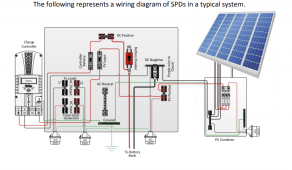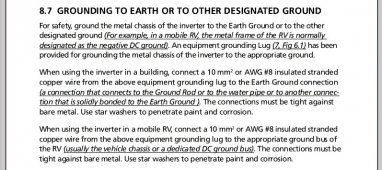John Frum
Tell me your problems
- Joined
- Nov 30, 2019
- Messages
- 15,233
Looking at page 4 figure 1.2 of https://www.midnitesolar.com/pdfs/SPD_Installation_Manual.pdf
I see that the only connection between the dc negative busbar and the ground busbar is through the spd.
Since the spd is just some varistors which will not be conductive at normal voltages, I take that to mean the system is floating until there is an induced surge.
Am I understanding that correctly?
@Will Prowse
I see that the only connection between the dc negative busbar and the ground busbar is through the spd.
Since the spd is just some varistors which will not be conductive at normal voltages, I take that to mean the system is floating until there is an induced surge.
Am I understanding that correctly?
@Will Prowse




